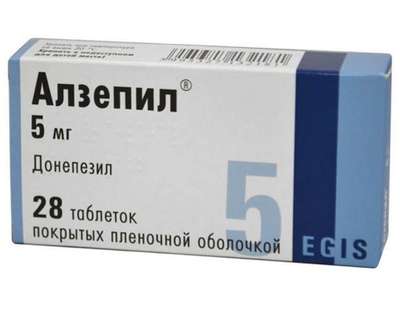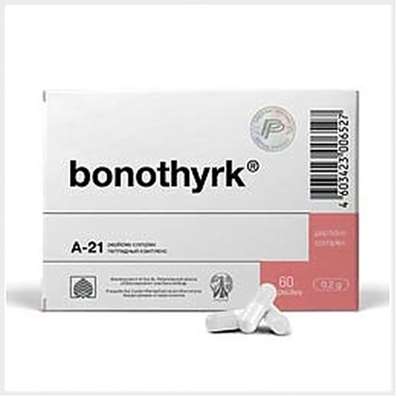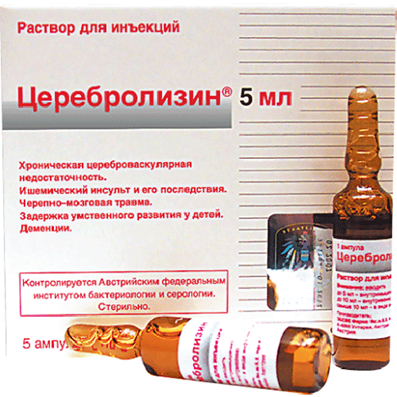Dosing of medicines
07 Dec 2016
Parameters which are used for the choice of dosage of medicinal preparations
Pharmakodinamic and pharmacokinetic parameters:
- Peak (maximum) levels in a blood (Cmax).
- Achievement time With max (Tmax).
- Duration of observation over concentration of medicinal substance in a blood.
- Duration of pharmacological effect(s).
- Elimination half-life of medicinal substance (T1/2).
- Biological availability (F).
- Accumulation.
- Induction mikrosomalnykh of enzymes.
- Characteristics of distribution.
- Linkng with proteins of a blood plasma.
- Metabolism (biotransformation).
- Egestion.
- Synergy.
- Interaction with other medicinal preparations.
- Tachyphylaxis.
- Tolerance.
The parameters of dosage of medicines bound to characteristics of the patient:
- Age.
- Sex.
- Body weight.
- Race or ethnic group.
- Residences.
- Disease severity.
- Associated diseases.
- The accompanying medicinal preparations.
- Other criteria of including (for example, smokers, non-smoking, etc.).
- Usually are defined in plasma or blood serum.
Bioavailability of the medicinal preparation accepted inside is a resultant of all processes which followed after its reception before emergence in a systemic blood flow i.e. it is availability of medicinal substance in a systemic blood flow after absorption from various parts of a GIT. The term "bioavailability" is sometimes used for the description of both degree (quantity), and rate with which medicine comes to a systemic blood stream.
Biological availability (F) is usually expressed as percent from the prescribed dose of a medicinal preparation defined in an organism in not changed look in comparison with the corresponding standard:
F = Aucisp*dst/AUCST * % Disp*100
where Aucisp the area under a curve "concentration of drug in a blood plasma time" the tested medicinal preparation;
AUCST the area under a curve "concentration of drug in a blood plasma time" a standard medicinal preparation;
Dst a dose of a standard medicinal preparation;
Disp a dose of the tested medicinal preparation.
Given to bioavailability at introduction of a dosage form inside it is possible to compare to results of intravenous administration. Bioavailability at intravenous administration is taken for 100%. The size reached at the last way is considered as absolute bioavailability. When comparing pharmacocinetics of the studied substance with standard for the dosage forms intended for introduction inside it is estimated as relative bioavailability.
Various factors can influence biological availability (for example, a nutrition, a disease, age, other medicinal preparations), and these factors have to be considered during clinical tests.
The factors influencing bioavailability of medicines for intake:
- physical and chemical properties of medicine (for example, solubility in gastric or intestinal juice, the size, type, a crystal form of a molecule);
- pharmaceutical factors (for example, type and amount of excipients, pressing pressure for preparation of tablets, the size of granules, quality of a film covering);
- GIT contents (for example, existence of food, other medicines);
- characteristics of a GIT (for example, πΝ gastric juice, time of his depletion, metabolic activity of enzymes of a wall of intestines, secretion of a GIT, disease);
- GIT flora (for example, intestinal bacteria);
- intake of hormones in a GIT;
- activity of the autonomic nervous system;
- metabolic status of the patient (for example, bad food);
- pathological states (for example, the diseases influencing absorption process);
- effect of the first passing of medicines through a liver;
- intensity of a bilious stream;
- other factors.
- When calculating bioavailability estimate three main pharmacokinetic parameters:
- maximum concentration;
- time of achievement of the maximum concentration;
- the area under a pharmacokinetic curve.
Bioequivalence assessment, i.e. ensuring identical bioavailability of medicine with two drugs from this dosage form and identical rate of achievement of the maximum concentration of drug in a blood is important for quality control of the reproduced (generic) drugs containing the same medicine in an identical dosage form.
In the drawing it is shown how two medicinal preparations containing the same medicinal substance differ from each other. So, rate of an absorption of drug B more slowly as time of achievement of Cmax in a blood plasma is more, than at drug A. Despite it, degree of an absorption of two medicinal preparations same as the areas under pharmacokinetic curves of drugs A and B are equivalent. Advantage of drug B is that the maximum level of a medicinal preparation in a blood plasma is lower than the level causing toxic effect. Pay attention to - Complex of cytamins for the visual system.
The most important problem of control of content of medicinal substance in a blood not to allow excess of the maximum concentration and development of toxic action. There is a set of other reasons for monitoring of level of a medicinal preparation in a blood plasma and other bioliquids. Some are given below.
The bases for measurement of concentration of medicinal substance in a blood plasma and/or other bioliquids:
- assessment of bioavailability and pharmacocinetics of medicinal substance under various conditions;
- control of performance of necessary demands by the patient;
- definition of existence and degree of tolerance to a medicinal preparation;
- differentiation of cases of the collateral reactions bound to a disease of the patient or to the accepted drug;
- development of the scheme of dosage of medicines;
- the combined use of medicinal preparations;
- granting basic data for the subsequent course use of medicinal preparations;
- assessment of mistakes at dosage of medicinal preparations;
- assessment of various reactions caused by genetic factors;
- assessment of range of concentration at which therapeutic effects ("a therapeutic window") are observed;
- other reasons.
The forecast of the expected maximum concentration of medicine in blood plasma based on use of the appropriate pharmacokinetic models prior to tests is very useful in case of a choice of the appropriate pharm therapist mode of dispensing to an exception of toxic levels. It is necessary to consider that by development of such model it is difficult to envelop everything potentially significant factors as many of them don't give in to the quantitative assessment (for example, interaction between medicines, activity the microsomal enzymes of a liver, etc.).
Time of achievement equilibrium (steady, constant, stationary levels) concentration (Css) of medicines in bioliquids is defined only by the period of their semi-deduction. For example, 50% of equilibrium concentration are reached during the first period while 90% of Css during 3,3 elimination half-life. If achievement of Css requires relatively a lot of time (for example, several days and more), then it is desirable to calculate the load dose of medicine. If time of achievement of Css small and medicine is quickly brought out of an organism, then the dosage form with controlled release of medicinal substance is required.
Duration of registration of concentration of medicines in bioliquid. To determine medicine reception frequency, it is necessary to estimate its concentration at bioliquids which are higher than the minimum therapeutic concentration adequately.
Phases of metabolism of medicines
Duration of pharmacological effects. For some medicines there is no direct correlation between their concentration in plasma of blood and pharmacological action. There are cases when the effect of reception of medicine lasts long, at the same time the content of medicine in plasma of blood manages to be determined within a short period of time.
The elimination half-life (semi-existence) of a medicinal preparation is time during which its concentration in bioliquid decreases twice. An elimination half-life of a medicinal preparation the important indicator necessary for calculation of the scheme of use promoting maintenance of equilibrium concentration of a medicinal preparation at its course appointment. However intervals between which settlement dosage of medicines is made can be calculated also through a half-cycle of pharmacological effect or proceeding from safety of reception of a medicinal preparation. For example, the elimination half-life of Diazepamum makes more than 30 h, however drug is prescribed in small doses by 2 3 times a day for decrease of sedation.
Some medicinal preparations collect in an organism after repeated use. This phenomenon as it was mentioned above, is called a cumulation. It is necessary to be especially careful when using medicines with a larger elimination half-life.
When after achievement of stationary concentration of a medicinal preparation in a blood plasma the patient stops accepting it, contents it during certain time falls to zero level. The curve describing dependence of depression of concentration of drug in a blood plasma from time is opposite to curve accumulation; depression of concentration at 50% of the size Css will happen during 1 elimination half-life, to 10% of Css within 3,3 periods, and drug will practically disappear from a blood plasma during 5 7 elimination half-lives.
At repeated use of some medicinal preparations, in particular Fenobarbitalum, Phenytoinum, in a liver level the microsomal enzymes usually increases. As these enzymes metabolize also other drugs, rate of elimination of the last is enlarged therefore the dose of a medicinal preparation against the background of induction can be insufficient. Especially it is important to consider it at clinical tests of new anticonvulsant drugs as most of patients already accepted the drugs inducing mikrosomalny enzymes. Own metabolism (autoinduktion) can also accelerate drug which induces mikrosomalny enzymes that leads to depression of pharm therapists action. Usually induction of enzymes occurs in 3 10 days after the beginning of reception of a medicinal preparation.
Rate and way of an absorption, distribution, penetration of medicinal preparations into various body tissues can affect selectivity and duration of their action. Mechanisms of an absorption (absorption) of medicines and penetration through biological membranes are identical and are divided into passive diffusion, the facilitated diffusion, a filtration, active transport, pinocytic. By passive diffusion on a gradient of concentration lipifilny unpolar substances (weak acids, the weak bases) get. The facilitated diffusion of medicines happens on a concentration gradient by means of carriers as which squirrels (glucose) act. The filtration is characteristic of penetration of hydrophylic substances through water pores in a membrane (urea). Active transport is carried out by means of transport systems, against a gradient of concentration (cardiac glycosides). The pinocytic represents an environment an external surface of a membrane of large molecules or units of molecules, formation of a vacuole which separates from a membrane plunges in a cell where blister contents (liposoluble vitamins) are released.
After entering in a systemic blood stream drugs are distributed in organs and tissues evenly or irregularly. So, hydrophylic medicines are distributed unevenly, without getting into cells, and being distributed generally in a blood plasma and interstitial liquid. The nature of distribution depends as on ability to be dissolved in water and lipids, and from durability of linkng with proteins, intensity of blood supply of organs and tissues. At distribution in an organism some medicines partially are late and collect in various organs and tissues owing to reversible linkng of medicines with proteins, lipids, nucleotides. This process is called deposition. For example, barbiturates quickly leave a systemic blood stream and pass into fatty tissue from which they are slowly released. Various barbiturates have different affinity to fatty tissue and, therefore, characteristics of distribution which determine the size of a dose and frequency ρε appointments.
Many medicinal preparations reversibly interact with such proteins of a blood plasma as an albumin. With pharmacological effect the maintenance of "free" fraction of a medicinal preparation correlates mainly. Any change in binding (especially for drugs which are bound to proteins for 90% and more) can affect their therapeutic and/or toxic effect. Hypoalbuminemia or appointment in combination with other medicinal preparations defining the competition for the place of linkng with proteins of a blood plasma can enlarge levels of "free" fractions that, undoubtedly, will affect efficiency of action.
Medicinal preparations in an organism are affected, as a rule, leading to their neutralization and elimination. Some freely soluble bonds in water eliminiruts by kidneys in not changed look, others enter the enzymatic reactions changing their chemical structure. The metabolism, or a biotransformation is the general concept reflecting chemical changes of medicinal substances in an organism. To a bowl of all metabolism depression of solubility of drug in fats (depression of lipofilnost) and rising of solubility in water (rising of hydrophylic nature), and with another change of pharmacological activity is result, on the one hand. The biotransformation of lipophilic medicines occurs under the influence of the enzymes of a liver localized in a membrane of an endoplasmatic retikulum of hepatocytes. These enzymes are called mikrosomal (oxidases of the admixed functions, or monooxygenases, the main component of system are R-450-reduktaza cytochrome and cytochrome R-450-gemoprotein which binds molecules of medicine and oxygen in the active center). Reaction proceeds with the participation of NADFN (for example, by a hydroxylation Fenobarbitalum, deaminations Diazepamum, N-oxidations Morphinum, S-oxidations fenotiazin turns). In a blood plasma, a liver, an intestine, lungs, skin, mucosas and other tissues there are nemikrosomal enzymes localized in cytoashes and mitochondrions (for example, novocamid, acetylsalicylic acid are exposed to hydrolysis in a blood plasma).
Conjugation tests which medicines enter usually proceed after end of mikrosomal and not microsomal oxidation (for example, Sulfadimethoxinum forms Amidums PP with glucuronic acid, and Sulfadimezinum with acetic). In the course of a conjugation high-polar hydrophylic compounds which quickly excrete with urine, the majority of metabolites also are formed is exposed to conjugation.
Only a small amount of drugs is removed by kidneys in not changed look. To a bowl of all it the "small molecules" capable to be in the ionized state at physiological values πΝ. Pharmacological active organic molecules are mainly lipophilic and remain not ionized at physiological values πΝ. Such drugs are usually bound to proteins of plasma, are badly filtered in a renal glomulus and reabsorbirutsya at the same time easily in a renal canaliculus. The metabolism is referred on rising of solubility of a molecule of a medicinal preparation that promotes its removal from an organism with urine. In other words, lipophilic medicinal preparations turn in hydrophylic and, therefore, into more easily removed bonds. The renal egestion of medicines happens to participation of a glomerular filtration through intercellular intervals in an endothelium of capillaries of a renal glomulus, getting to a lumen of a canaliculus; active secretion in a lumen of a canaliculus and a reabsorption by passive diffusion on a concentration gradient through membranes of a renal canaliculus.
Some medicines which are badly soaked up, removed with excrements (Nistatinum) others are emitted with bile in a lumen of an intestine and removed with excrement (Rifampicinum). Other drugs after allocation with bile in an intestine are repeatedly soaked up (enterogepatichesc circulation, for example, Morphinum). Aeriform anesthetics are removed by lungs, drugs of halogens stalemate and sialadens (Iodidums), the lacrimal glands (Rifampicinum), mammary glands (cytostatics).
Dosage of pro-drugs
Change of pharmacological activity of medicinal preparations can result from a metabolism in the following directions:
- pharmacological active agent turns in pharmacological inactive that is characteristic of the majority of drugs;
- pharmacological active agent at the first stage turns into another pharmacological active:
- Pro-drugs. Initially inactive drugs turning in an organism into pharmacological active agents belong to pro-drugs.
One of the purposes of creation of pro-drugs is improvement of pharmacokinetic properties that accelerates and enlarges their absorption. So, Ampicillinum esters pivampitsin, talampitsin and bikampitsin which unlike Ampicillinum are almost completely soaked up at intake (98 99%) were developed. In a liver these drugs are exposed to hydrolysis under the influence of enzymes of carboxyesterases to Ampicillinum which has antibacterial activity. One more example are APF inhibitors containing carboxyl group. So, enalapril is soaked up at intake for 60% and hydrolyzed in a liver under the influence of carboxyesterases to active enalaprilat. It is necessary to notice that enalaprilat at introduction is inside soaked up only for 10%. The purpose of creation of pro-drugs is also rising of safety of a pharmacotherapy. For example, sulindak at intake doesn't irritate mucous a stomach as doesn't block in it synthesis of cytoprotective Prostaglandinums. Only in a liver sulindak is hydrolyzed with formation of active sulfide of sulindak. One more purpose of creation of pro-drugs rising of selectivity of action of medicinal preparations that also increases their efficiency and safety. Dofaminum is used for intensifying of a renal blood flow (at an acute renal failure), however it influences a myocardium and vessels. At the same time the ABP raises, there are tachycardia and arrhythmias. Accession to Dofaminum of the rest of glutaminic acid led to creation of drug of a glutamil-dof. Glutamil-dofa is hydrolyzed to Dofaminum only in kidneys under the influence of glutamiltranspeptidasa and decarboxylase of L-aromagicheskikh of amino acids and, therefore, practically doesn't make impact on the central hemodynamics.
Pro-drugs can have both active and inactive metabolites.
At the patients accepting medicines tolerance to them, i.e. decrease in reaction to medicine reception sometimes develops that can demand increase in a dose for manifestation of equivalent effect. Effects of interaction between medicines can lead to synergysm of the desired effects, decrease in therapeutic effects, toxic collateral reactions, unusual or difficult effects which are difficult for classifying.
Interaction of drugs is described by several mechanisms: medicinal incompatibility in case of use of medicines, the induction the mikrosomal enzymes caused by one medicine which influences metabolism of another, and kidney effects of one medicine which changes elimination of another.
The accounting of interaction of drugs is necessary at their combined application.

 Cart
Cart





